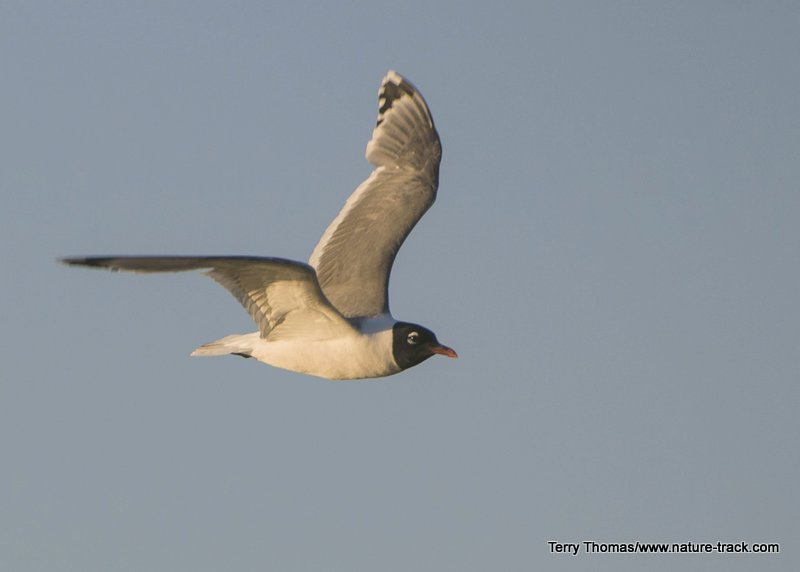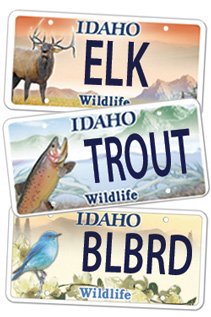Gulls

A Franklin’s gull at Market Lake WMA. During the breeding season the black head makes this gull one of the more easily identified of the gulls.
In 1955, the state of Utah officially recognized the “sea gull” as the state bird in recognition of how flocks of gulls saved pioneer crops from a plague of locusts in 1848. Over time, the California gull has become universally recognized as the bird referred to as the “sea gull”, but the legal statute has apparently never been changed to this day.
Having grown up in Utah, I doubt I will ever completely expel the word, “sea gull”, from my vocabulary. Today though, these birds, members of the family, Laridae (along with terns and skimmers), are referred to collectively as gulls. The family Laridae has 98 species worldwide and they breed on every continent, including Antarctica. My Sibley Guide to Birds shows 27 gull species in eight genera in North America.
Identifying gulls, particularly those of the genus, Larus, or the white-headed gulls, is a challenge. Gulls show a preference for water, hence the original moniker, sea gull, but can be found just about anywhere. Gulls almost always nest on the ground near or over water in emergent vegetation such as cattails or bulrushes, in colonies of up to several thousand pairs. They are especially attracted to places like trash dumps, so inland areas may still have gull populations so long as nesting habitat is close by.
It is a temptation to describe gulls in general as white birds but that would be misleading. There is only one truly white gull, the ivory gull, which, like polar bears, spends the bulk of its time on the pack ice of the Arctic.
Gulls are substantially white and gray, but that doesn’t do much to separate them from many terns, which are also largely white and gray. Terns though are typically smaller, slenderer and have narrow pointed wings.
Accurately identifying gulls is one of nature’s great challenges. They can be quickly recognized as gulls, but which species? Many of them look very similar and often take an expert to reliably identify.
Besides adults that look similar, gulls are long-lived species that take 2-4 years to mature. At each stage of maturity, the birds look a bit different, often not well representing the adult plumage they will end up with but resembling a number of other gull species in juvenile plumage.
To further complicate identification, many gull species are closely related and readily hybridize. As expected, hybrids tend to look like both their parents, turning identification into conjecture and argument confusing even competent birders.
Start with location to narrow down the field to identify a gull. If you see a dark-backed gull with a yellow bill at Market Lake, you can quickly realize that it isn’t likely to be a yellow-footed gull which is found exclusively on the Baja Peninsula or a lesser black-backed gull which is found east of Colorado. The range maps in your bird book are invaluable as a starting point.
I hate to be a pessimist, but beyond that it can get tough in a hurry. There are details such as “slightly larger than” or “slightly darker than”, but frankly, if there isn’t something to compare them to, these features are of little value. Pay attention to detail and take your best guess.
Last week we looked at some gulls on the lake where we were camped at. My wife quickly identified them as California gulls. We wrote it down on our list, happy with our skills. After all, who is going to say different? My only other choice is to just lump them all as “sea gulls” and let it go at that.
Wildlife License Plates
Great news! as of 2024, there are three NEW designs for license plates. They still are bluebird, cutthroat trout and elk, but they are beautiful.
Idaho Wildlife license plates provide essential funding that benefits the great diversity of native plants and wildlife that are not hunted, fished or trapped—over 10,000 species or 98% of Idaho’s species diversity. Game species that share the same habitats (such as elk, deer, antelope, sage-grouse, salmon, trout) also benefit from these specialty plates.
No state tax dollars are provided for wildlife diversity, conservation education and recreation programs. Neither are any revenues from the sale of hunting or fishing licenses spent on nongame species. Instead, these species depend on direct donations, federal grants, fundraising initiatives—and the Idaho Wildlife license plates.
Both my vehicles have Bluebird Plates. I prefer the bluebird because the nongame program gets 70 percent of the money from bluebird plates, but only 60 percent of the money from elk and trout plates - 10 percent of the money from elk plates supports wildlife disease monitoring and testing programs (to benefit the livestock industry) and 10 percent from cutthroat plates supports non-motorized boat access.
Incidentally, in 2014, the Idaho Legislature denied the Department of Fish and Game the ability to add new plates or even to change the name of the elk and cutthroat plates (very specific) to wildlife and fish plates, a move that would have allowed for changing images occasionally and generating more revenue. It would seem that they believe that we Idahoans don't want a well funded wildlife program.
I think it is time we let the Legislature know that Idahoan support wildlife funding and that we would like to see these generic plates come to fruition.

Wildlife License Plates
Great news! as of 2024, there are three NEW designs for license plates. They still are bluebird, cutthroat trout and elk, but they are beautiful.
Idaho Wildlife license plates provide essential funding that benefits the great diversity of native plants and wildlife that are not hunted, fished or trapped—over 10,000 species or 98% of Idaho’s species diversity. Game species that share the same habitats (such as elk, deer, antelope, sage-grouse, salmon, trout) also benefit from these specialty plates.
No state tax dollars are provided for wildlife diversity, conservation education and recreation programs. Neither are any revenues from the sale of hunting or fishing licenses spent on nongame species. Instead, these species depend on direct donations, federal grants, fundraising initiatives—and the Idaho Wildlife license plates.
Both my vehicles have Bluebird Plates. I prefer the bluebird because the nongame program gets 70 percent of the money from bluebird plates, but only 60 percent of the money from elk and trout plates - 10 percent of the money from elk plates supports wildlife disease monitoring and testing programs (to benefit the livestock industry) and 10 percent from cutthroat plates supports non-motorized boat access.
Incidentally, in 2014, the Idaho Legislature denied the Department of Fish and Game the ability to add new plates or even to change the name of the elk and cutthroat plates (very specific) to wildlife and fish plates, a move that would have allowed for changing images occasionally and generating more revenue. It would seem that they believe that we Idahoans don't want a well funded wildlife program.
I think it is time we let the Legislature know that Idahoan support wildlife funding and that we would like to see these generic plates come to fruition.

"WOW. What a phenomenal piece you wrote. You are amazing." Jennifer Jackson
That is embarrassing, but actually a fairly typical response to my nature essays. Since The Best of Nature is created from the very best of 16 years of these nature essays published weekly in the Idaho Falls Post Register (online readership 70,000), it is a fine read. It covers a wide variety of topics including humorous glimpses of nature, philosophy, natural history, and conservation. Readers praise the style, breadth of subject matter and my ability to communicate complex and emotional topics in a relaxed and understandable manner.
Everyone can find something to love in this book. From teenagers to octogenarians, from the coffee shop to the school room, these nature essays are widely read and enjoyed.
Some of the essays here are my personal favorites, others seemed to strike a chord with readers. Most have an important message or lesson that will resonate with you. They are written with a goal to simultaneously entertain and educate about the wonderful workings of nature. Some will make you laugh out loud and others will bring a tear to the eye and warm your heart.
Readers Write:
"You hit a home run with your article on, Big Questions in Nature. It should be required reading for everyone who has lost touch with nature...great job!" Joe Chapman
"We enjoyed your column, Bloom Where Planted. Some of the best writing yet. The Post Register is fortunate to have your weekly columns." Lou Griffin.
To read more and to order a copy, click here or get the Kindle version
Copies are also available at:
Post Register
Island Park Builders Supply (upstairs)
Barnes and Noble in Idaho Falls
Harriman State Park, Island Park
Museum of Idaho
Valley Books, Jackson Wyoming
Avocet Corner Bookstore, Bear River National Wildlife Refuge, Brigham City, Utah
Craters of the Moon National Monument Bookstore, Arco, Idaho